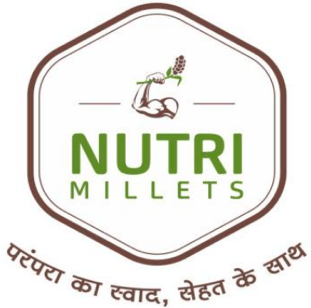Late Dr. Dnyaneshwar Deshatwar
BAMS, MD
Former Reader
SAS Ayurvedic College
Varanasi
Ayurveda and Millets
As per Ayurvedic perspective, millet is considered to have sweet, heating (warm), dry and light properties. It makes them a special grain because despite of having a satisfying nature, and nourishing effect of the Sweet taste but it is light, easy to digest and doesn’t cause damp unlike other heavier grains
Due to above properties of millet, it is considered as medicinal food to treat
- High Ama – the sticky by-product of incomplete digestion
- Dull Agni
- Diabetes
- Excess weight
- Edema
- Excess Kapha (mucous/fluid) conditions
Ayurveda and vocal for local – Need for eating local – a scientific view
Ayurveda isn’t only about the medicines and diets, it’s a comprehensive view of leading a healthy lifestyle and considers the earthly and universal factors as well. Just like the flora and fauna of any given geographical unit, human being is also a constituent of the ecosystem in that unit. In this regard, being subjected to the same climatic conditions, he also shares same existential struggles as the other species of flora and fauna. In light of this fact, its but natural that the food derived by man from such local resources has the highest degree of conformity with his own bodily tissues, in comparison to the food derived from the sources which are alien to his own habitat.
By eating local foods, one deepens its roots with the land, to the local laws of nature. In turn, it makes our immunity, digestion, ability to fight infection stronger and adds more variety to your diet. Ayurveda strongly recommends consuming food and medicines, derived from locally grown crops, fruits or animals, in healthy and diseased states respectively.
Ayurveda has beautifully summarised this principle in the concept of Deshasatmya. Desha here means the geographical area and satmya means wholesomeness. Over the generations humans develop local food habits which later convert to local food culture. So we can see variations in food cultures of various parts of the world. All these cultures have profound bearings over the physiological responses to such local foods by the members of the community belonging to such food culture. An alien food introduced to such an isolated community disturbs this delicate balance.
It’s also evident when a member of a certain locality migrates to other locality where a different food culture is followed. It takes a considerable time for him to get acclimatized to new environment. And in most of the instances this acclimatisation is incomplete. This disturbs the balance of doshas in his body, giving rise to various metabolic disorders. Obesity, diabetes and hypothyroidism are few to name.
Rate of obesity has rising in every country of the world since 1975, India is no exception to it. High levels of imported foods have contributed to expanding waistlines, says a WHO data. This makes it evident how important it is to eat local food.
So, if you are from Rajasthan, Gujrat, Maharashtra, pearl millet and sorghum are primary crops. Sorghum is a major crop in the Telangana, Andhra Pradesh, Maharashtra and parts of Central India
Finger millet is a primary crop in Tamil Nadu and Gujarat, and is a minor crop in Telangana. In Madhya Pradesh, both kodo and little millet are predominant, while foxtail millet is important in Andhra Pradesh and Karnataka.
Barnyard millet and proso millet are grown largely in hills of Uttar Pradesh, North-Eastern region and plains of North Bihar and Western Uttar Pradesh and Maharashtra.
Same holds good for various fruits and vegetables. Whatever fruits, vegetables, cereals, grains are available locally that should be consumed in good amount.
Eating too many foods grown in completely different climates around the world can disrupt digestion and cause constipation or even food allergies
Local food is fresh and hence nutrient dense and also more suitable for the body than those which have been produced thousands of kilometres away in a different environment and then added with preservatives and loaded in trucks and transported for days, thus losing most of their benefits.
Locally grown food boosts the economy of the region and also promotes soil health by rotating crops which increases the fertility of the soil and the quality of the produce. So, be vocal for the local and boost your vigor!

